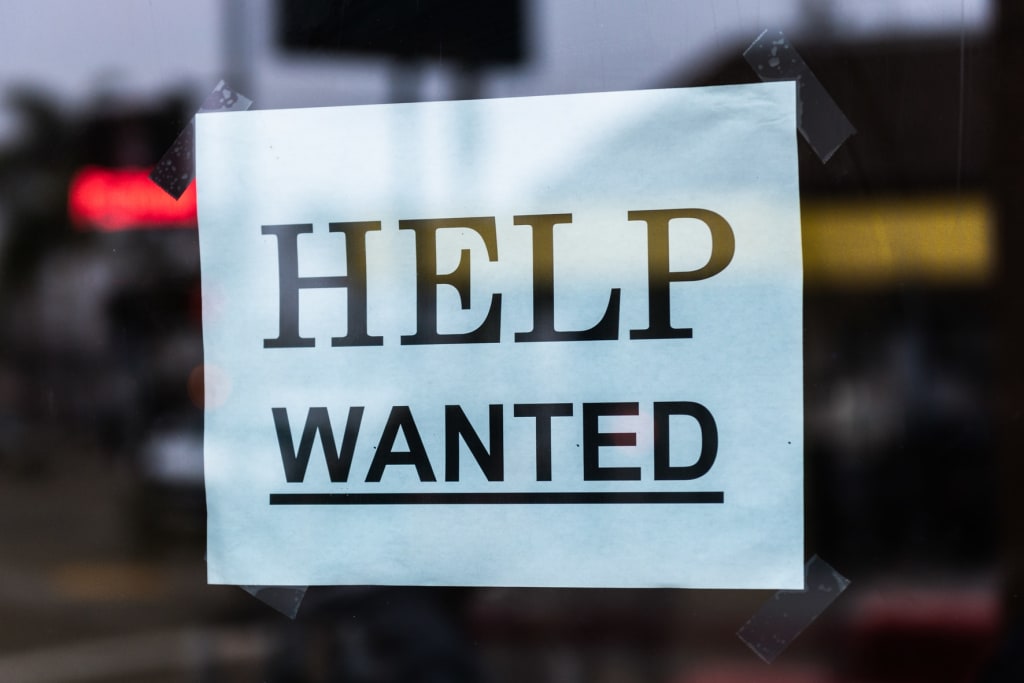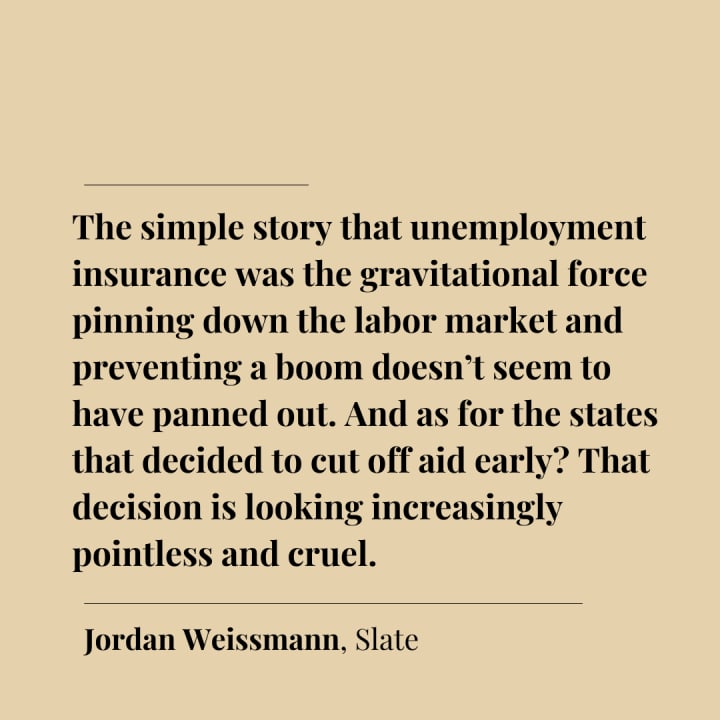Where have all the workers gone?
The labor shortage has multiple causes. Laziness isn’t one of them.

You may have noticed that somehow every business in existence is severely short staffed. The effects are everywhere. Shops are reducing their operating hours. Fast food joints are running on drive through only. Deliveries are delayed and shelves go empty as bottlenecks accumulate in manufacturing. Many observers blamed generous unemployment benefits for labor shortages. Calls to slash unemployment rang out--that would force the bums back to work. However, savvy commentators predicted that taking money away from the working class was unlikely to improve the economy. And indeed, after bonuses to unemployment benefits ended the status of the labor market didn’t budge at all.

So if it’s not just a matter of people choosing to live off the dole, then what is going on? What has happened to all the workers? Well, there's probably more than one reason. Here are some of the culprits.
The workers are dead.
So that is a bit of a dramatic statement. The population of the USA has continued to rise during the COVID pandemic. And many of the people who died of COVID were elderly people who were already retired. However, just because something is dramatic doesn’t mean it’s wrong. Working class people got hit harder by COVID. While office workers were able to shift to working at home, low paid doers of physical tasks found out that they were actually “essential workers” and expected to go on working as usual. Workers in some industries like meat packing got hit particularly hard. And the effects go beyond the individuals who died of COVID. If the person who used to work next to you died of COVID, you might reasonably decide that you weren’t going into the plant anymore.
People have switched to gig jobs.
It’s possible for a man to have his meal delivered by Postmates, get a gardener from TaskRabbit, have his grocery shopping done by Instacart, go to work by Lyft, have a logo designed by Fiverr and then complain about how he can't hire anyone.
People can be somewhat amnestic. We forget that it wasn’t that long ago that Steak ‘n Shake wasn't a restaurant that you could get delivery from. When people lost jobs because of the pandemic, some turned to gig work. When parents suddenly had to supervise kids studying at home, some of them needed the flexibility of gig work. When people felt their jobs put them in danger, they found it was easier to socially distance with gig work. Guess what? Not all of those people want to return to their old jobs.
Nor is gig work all about menial labor. During quarantine many women found that they could turn a tidy profit selling lewd photos on sites like OnlyFans. On a slow news day a lazy reporter can easily bang out a story like this: “Woman who had respectable job now makes more selling nude photos. And she’s a mom!"
People are pursuing their dreams.
When the pandemic struck, some people who were close to retirement went ahead and retired. People who were thinking about going back to school may have found they now had the time to do it. Millions of Americans decided that it was the time to start their own business. Some maniacs are even trying to make their way in the world by writing articles on open platforms. Really, where do these people get off leaving the labor market when they’re needed?
People are burnt out.
Burnout at work first really hit the healthcare industry as doctors and nurses struggled to keep people alive and watched their colleagues get sick. In 2021 the treatments for COVID have improved some but in some ways burnout has gotten worse. That’s because so many of the people showing up in ICUs are people who actively choose to not get vaccinated, infuriating overburdened healthcare workers.

Burnout isn’t just happening at hospitals though. At restaurants and stores, stretched thin staff have had enough. Sick of having to cover too many shifts, some employees are up and quitting. This in turn makes it harder on remaining staff who are asked to pick up ever more slack. Compounding the problem are customers who are getting irate, sometimes very irate, at the reduced service provided. This can create a death spiral where staffing levels and customer satisfaction gets progressively worse until a business just has to close its doors.
This sounds grim but it is actually a process that should lead to long term stabilization. As marginal companies go under, workers move onto places that can make better use of them. Economists call this process creative destruction. It’s normal and even necessary for inefficient business to fold when faced with more dynamic competition. Of course it is not much fun for the individuals involved.
People are still terrified of COVID.
We need to recognize something: this pandemic is not over. 1 in 500 Americans have died of COVID. The death toll has surpassed the 1918 Spanish Flu outbreak, becoming the worst pandemic in US history. The Delta Variant and vaccine refusers have made this into an ongoing crisis. So even if you’re not getting a padded unemployment benefit, it might be a completely reasonable decision for a vulnerable person to stay at home.
So what is the solution to this labor crisis? Well, I think it’s worth asking, this is a crisis for whom? Because it may be an inconvenience but it's not really a crisis for workers. Workers are gaining power since employers know an unhappy worker can go down the street and get another job. When the plague struck Europe the disruption to the status quo gave power to workers. From Brown University:
The demand for people to work the land was so high that it threatened the manorial holdings. Serfs were no longer tied to one master; if one left the land, another lord would instantly hire them. The lords had to make changes in order to make the situation more profitable for the peasants and so keep them on their land. In general, wages outpaced prices and the standard of living was subsequently raised.
Of course 2021 is not the same as 1358. The biggest gainers of the pandemic have been billionaires. The question now is: what will society see as the bigger injustice? That owners of capital can’t get cheap labor? Or that .1% of the population has a grotesque amount of power?
About the Creator
Buck Hardcastle
Viscount of Hyrkania and private cartographer to the house of Beifong.






Comments
There are no comments for this story
Be the first to respond and start the conversation.